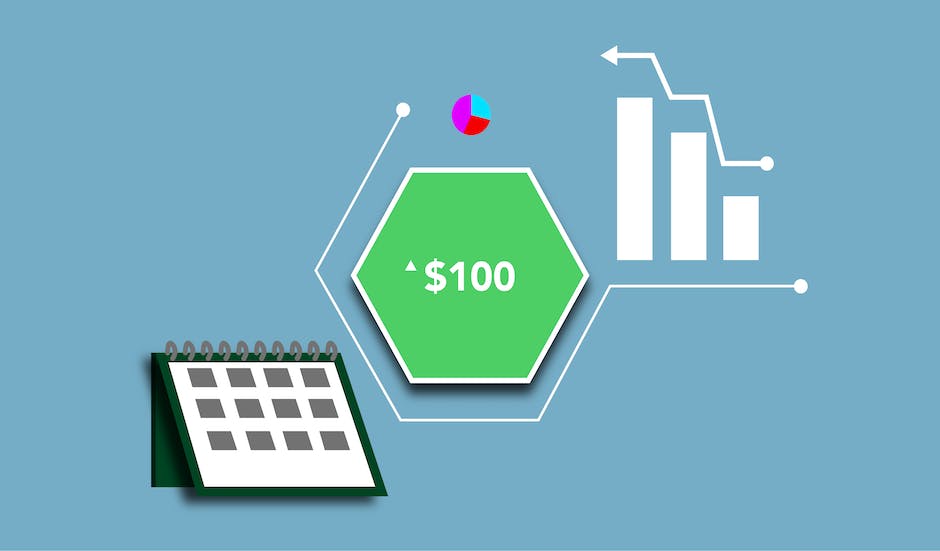Central banks play a critical role in shaping the economic landscape and maintaining the stability of financial systems across the globe. As key institutions responsible for managing national currency supplies, interest rates, and inflation, central banks exert significant influence on both domestic and international financial markets. This essay delves into the history and roles of such institutions, identifies key central banks worldwide, elaborates on the tools they use to implement monetary policies, and discusses the impacts of unconventional approaches like quantitative easing. Furthermore, the essay explores the relevance of digital currencies in the central banking landscape and sheds light on the challenges and future directions for these influential institutions.
History and Role of Central Banks
The concept of central banks
The concept of central banks dates back to the 17th century when the Swedish Riksbank was established in 1668 as the first central bank in the world. Since then, the idea of having a central institution responsible for managing a country’s money supply and overseeing its financial system has spread globally. Today, most countries have central banks that play key roles in their economies. Over time, the functions and responsibilities of these banks have evolved to address the changing needs of the global economy. In this section, we will focus on the primary functions, responsibilities, and roles of central banks in modern economies.
Functions of Central Banks
Central banks have several critical functions that ensure the proper functioning of an economy. One of their most basic and well-known roles is to set interest rates. By adjusting short-term interest rates, central banks can influence the overall level of interest rates in the country, thereby affecting the cost of borrowing, investment, and consumption. Through this role, central banks aim to achieve price stability and encourage economic growth.
Another crucial function of central banks is managing inflation. Inflation is a significant concern for any economy, as high inflation can erode the purchasing power of money and negatively impact economic growth. To monitor and manage inflation levels, central banks use various tools such as open market operations (buying and selling of government securities), changing the reserve requirements for commercial banks, and adjusting interest rates.
Responsibilities of Central Banks
In addition to their main functions, central banks also bear several other responsibilities essential to a well-functioning financial system. One such responsibility is being a lender of last resort to commercial banks, ensuring these banks have access to liquidity during times of crisis. This role plays a vital role in preserving the stability of the banking system and preventing bank runs.
Central banks also oversee the payment and settlement systems within a country. These systems are essential for the smooth functioning of the economy, as they enable transactions and financial activities to occur swiftly and securely. By supervising these systems, central banks work to ensure their reliability, efficiency, and security.
Another significant responsibility of central banks is the issuance of banknotes and the management of a country’s money supply. Central banks control the overall amount of money in circulation to support economic growth while maintaining price stability. To do this, they employ various monetary policy tools such as adjusting interest rates, conducting open market operations, and setting reserve requirements for commercial banks.
Central Banks and Financial Stability
Over the past few decades, ensuring financial stability has become an increasingly important focus for central banks. As institutions tasked with overseeing the health of their respective financial systems, central banks must monitor and address potential threats to stability.
To do this, central banks often use macroprudential policies, aiming to mitigate systemic risks and prevent financial crises. Examples of these policies include implementing capital buffers for banks, adjusting loan-to-value ratios for mortgages, and monitoring the interconnectedness of financial institutions.
Introduction to Central Banks
Central banks hold significant importance in modern economies, with their primary functions being setting interest rates and managing inflation. Through various monetary policy tools, central banks aim to maintain price stability and support economic growth. They also have several essential responsibilities, including acting as a lender of last resort for commercial banks, overseeing a country’s payment and settlement systems, and managing its money supply. Additionally, central banks are taking a more active role in promoting financial stability to prevent potential crises and maintain a healthy financial system.

Photo by lil_bear_photo on Unsplash
Key Central Banks Worldwide
Notable Central Banks in the Global Economy
Playing an essential role in the global economy, central banks are responsible for implementing monetary policies, ensuring financial stability, and providing support to their respective governments. Some of the most influential central banks worldwide that significantly impact global finance are:
- The Federal Reserve (United States)
- European Central Bank (EU)
- Bank of Japan (Japan)
- Bank of England (United Kingdom)
The following sections delve deeper into each of these central banks, discussing their roles, policies, and their overall effects on worldwide financial systems.
Federal Reserve (United States)
The Federal Reserve, or “Fed,” is the central banking system of the United States, responsible for implementing the monetary policy of the country. Established in 1913, its primary objectives, as stated in the Federal Reserve Act, are maximizing employment, stabilizing prices, and moderating long-term interest rates. The Fed carries out these objectives through the use of various tools such as open market operations, adjusting the discount rate, and influencing reserve requirements.
The Federal Reserve consists of several components, the most significant of which are:
- The Board of Governors
- The twelve regional Federal Reserve Banks
- The Federal Open Market Committee (FOMC)
The FOMC, in particular, plays a crucial role in setting the Fed’s monetary policy by determining the target interest rates, which influences economic growth, inflation, and employment rates.
The decisions made by the Federal Reserve have a significant impact on the global economy, as any changes in the US monetary policy can affect exchange rates, trade, and international investment.
European Central Bank (EU)
The European Central Bank (ECB) is the central bank for the 19 European Union countries that have adopted the euro as their currency. Established in 1998, the ECB is responsible for implementing the monetary policy for the euro area, aiming to maintain price stability and ensuring a low inflation rate. Its key functions include defining and implementing the euro area’s monetary policy, conducting foreign exchange operations, and managing the foreign reserves of the euro area countries.
The ECB’s Governing Council, composed of the six members of the ECB’s Executive Board and the governors of the national central banks of the euro area countries, is the main decision-making body responsible for setting interest rates and formulating the monetary policy.
As the euro is the second most widely used currency in the world, the decisions made by the ECB have a significant impact on the global economy, affecting international trade, exchange rates, and investments.
Bank of Japan (Japan)
The Bank of Japan (BoJ) is the central bank of Japan, established in 1882. Its primary objective is to maintain price stability, aiming for a sustainable economic growth rate with stable prices. The BoJ’s main functions include issuing and managing banknotes, implementing the monetary policy, and ensuring the stability of the financial system.
The Policy Board of the BoJ, consisting of its governor, two deputy governors, and six other members, is the main decision-making body responsible for determining the monetary policy, setting the target interest rate, and managing the overall money supply.
The Bank of Japan’s monetary policy decisions greatly influence the Japanese economy, Asia-Pacific region, and global financial markets, as Japan is one of the world’s largest economies.
Bank of England (United Kingdom)
The Bank of England (BoE), established in 1694, is the central bank of the United Kingdom. Its primary objective, as defined by the UK Government, is to maintain monetary and financial stability. The BoE’s key functions include setting the UK’s monetary policy, maintaining the stability of the financial system, and issuing banknotes.
The Monetary Policy Committee (MPC) is the main decision-making body responsible for setting the Bank’s monetary policy, including setting the interest rate, and implementing quantitative easing when necessary. The MPC’s primary goal is to maintain price stability, targeting a 2% inflation rate.
As one of the world’s major financial centers, the decisions made by the Bank of England significantly impact the global economy, financial markets, and international investments.
Introduction to Central Banks
Central banks play a crucial role in shaping the global economy, with the Federal Reserve, European Central Bank, Bank of Japan, and Bank of England being the most influential ones. The decisions they make regarding monetary policies and financial stability not only affect their respective countries, but also have significant ramifications on exchange rates, international trade, and investments across the globe. As a result, understanding the roles and policies of these key central banks is essential for anyone interested in global finance and the economy.

Monetary Policy Tools
Central Banks and Monetary Policy Tools
In order to effectively manage a nation’s economy and achieve objectives such as price stability, full employment, and promoting economic growth, central banks implement various monetary policy tools. The primary monetary policy tools typically employed by central banks include open market operations, reserve requirements, and the discount rate. By examining these tools in-depth, one can gain a better understanding of how central banks use them to influence economic activity and maintain a stable financial system, as well as how their decisions affect the global economic landscape.
Open Market Operations
Open market operations (OMOs) are one of the most common and essential monetary policy tools used by central banks. OMOs involve the purchase or sale of government securities, such as treasury bills or notes, in the open market. By conducting these transactions, central banks can directly influence the supply of money in the economy, as well as short-term interest rates.
When a central bank purchases government securities, it injects money into the financial system, increasing the money supply and thus lowering short-term interest rates. This process, known as monetary easing or expansionary monetary policy, stimulates economic growth by making borrowing cheaper for businesses and consumers. Conversely, when a central bank sells government securities, it reduces the money supply and raises short-term interest rates. This process, known as monetary tightening or contractionary monetary policy, helps to curb inflation and slow down an overheating economy.
Reserve Requirements
Reserve requirements are another essential monetary policy tool used by central banks. They are the regulations that mandate the minimum amount of reserves that banks must hold against their liabilities, such as customer deposits. These reserves can either be held in cash at the bank’s vault or as a deposit at the central bank.
By adjusting the reserve requirements, central banks can control the amount of money that banks have available for lending and influence the money supply and credit conditions in the economy. If the central bank increases the reserve requirements, banks have to hold more reserves, reducing their ability to create new loans, and ultimately leading to a decrease in the money supply. Conversely, when reserve requirements are lowered, banks can lend more, increasing the money supply and stimulating economic activity.
Discount Rate
The discount rate, also known as the central bank’s lending rate, is the interest rate at which commercial banks can borrow short-term funds from the central bank. Typically, banks borrow from the central bank through the discount window when they face temporary liquidity issues or when they cannot obtain funds in the interbank market.
By changing the discount rate, the central bank can influence the cost of borrowing for commercial banks, affecting their lending behavior and the overall money supply. If the central bank raises the discount rate, borrowing from the central bank becomes more expensive, and banks will be more cautious in their lending activities, reducing the money supply and credit growth. In contrast, lowering the discount rate encourages banks to borrow more funds from the central bank and extend more loans to businesses and consumers, thereby increasing the money supply and fostering economic growth.
Introduction to Central Banks and Monetary Policy
Central banks play a crucial role in managing a country’s economy by implementing monetary policy tools that influence economic activity. These tools can affect variables such as inflation, unemployment, and long-term economic growth. However, despite their potential effectiveness, these tools are not without limitations and risks. Central banks must carefully consider the timing and scale of their actions to avoid unintended consequences, such as causing financial instability or fueling asset bubbles. Ultimately, the success of monetary policy depends on many factors, including the ability of central banks to implement their policy tools effectively and adapt to changing economic conditions.

Quantitative Easing and Its Effects
One Notable Monetary Policy Tool: Quantitative Easing
Quantitative easing serves as an example of a monetary policy tool employed by central banks. It involves the large-scale purchase of financial assets, such as government bonds, in attempts to lower long-term interest rates, encourage lending and investment, and raise asset prices. Ultimately, this should boost economic activity. Central banks typically turn to QE when their standard tool, short-term interest rate cuts, have reached their lower bounds or have proven insufficient to revive a sluggish economy.
Goals of Quantitative Easing
The primary goals of quantitative easing are to combat deflation, loosen credit conditions, and spur economic growth. By increasing the money supply, QE exerts downward pressure on interest rates across the yield curve, making it cheaper for households and businesses to borrow and invest. It also supports asset prices, which can improve balance sheets and promote consumer spending through the so-called wealth effect. Beyond these direct channels, QE can serve as a signal of central banks’ commitment to accommodative monetary policy, fostering expectations of future economic growth and inflation.
Implementation of Quantitative Easing
Quantitative easing is typically carried out through large-scale asset purchases, with central banks buying financial securities in the open market. These purchases inject new reserves into the banking system, which can then multiply into broader money creation as banks extend credit and create deposits. The central bank may target specific maturities or types of assets to influence particular segments of the yield curve or markets they deem particularly impaired. For example, during the global financial crisis, the Federal Reserve purchased not only long-term Treasury securities but also mortgage-backed securities to support the housing market and alleviate strains in financial markets.
Consequences of Quantitative Easing
The effects of quantitative easing on the economy have been subject to much debate. Proponents argue that QE has been successful in helping to stabilize financial markets, lower interest rates, and support economic growth, as seen in the United States and the Eurozone following the implementation of such policies. Additionally, QE has not led to runaway inflation, as some critics had feared, due to a variety of factors, such as ongoing economic slack and global disinflationary pressures.
However, quantitative easing has also been associated with some unintended consequences. These include distortions in financial markets by potentially creating asset bubbles and driving investors into riskier assets. There are also concerns that QE could contribute to income inequality by disproportionately benefiting the wealthy, who tend to hold a higher share of financial assets. Finally, the prolonged use of unconventional monetary policies, such as QE, may make it more difficult for central banks to eventually unwind their large-scale asset purchases and return to a more normal policy stance.
Introduction to Central Banks
Central banks play a significant role in a nation’s economy by implementing monetary policies to stabilize the economic environment and promote growth. One such unconventional monetary policy used by central banks is quantitative easing (QE), which aims to address economic downturns and support growth. While QE has demonstrated some success in achieving its objectives, the policy also comes with potential downsides and long-term ramifications. As the world of finance evolves, central banks find themselves exploring new potential solutions, such as central bank digital currencies (CBDCs), to offer increased efficiency and security in the monetary system.

Central Banks and Digital Currencies
Central Banks and Digital Currencies
As technological advancements transform the financial sector, central banks worldwide are taking notice and increasingly showing interest in adopting digital currencies. Central bank digital currencies (CBDCs) represent a promising type of digital currency designed to offer various benefits compared to traditional forms of money. These benefits include increased efficiency, lower transaction costs, and enhanced security, among others. In this discussion, we will delve into the advantages and disadvantages of CBDCs, as well as take a look at some of the pilot projects that have been proposed or are currently being implemented around the world.
Advantages of CBDCs
One of the main advantages of CBDCs is that they can help reduce the cost of maintaining and transferring physical currency. Printing, transporting, and storing physical cash can be expensive and time-consuming. Digital currencies can help central banks save money by streamlining these processes. Additionally, CBDCs can potentially help reduce the occurrence of counterfeiting. Since digital currencies rely on encryption and advanced security measures, they are generally considered more difficult to counterfeit than physical currency.
Another advantage of CBDCs is that they can facilitate faster and more efficient payment systems. Digital transactions can be processed and confirmed in real-time, reducing the settlement risk associated with traditional payment systems. This can also lead to a more inclusive financial system since digital currencies can potentially be more accessible and affordable for people who do not have access to traditional banking services.
Moreover, CBDCs offer central banks better control and oversight of the money supply. By being able to track each transaction made with digital currency, central banks can closely monitor the money supply and more effectively implement monetary policy.
Disadvantages of CBDCs
Despite their advantages, CBDCs also come with some risks and potential downsides. One of the main concerns is the issue of privacy. As digital currencies enable central banks to track and monitor every transaction, this could lead to increased surveillance and potentially invasive monitoring of individuals’ financial activities.
Another concern with CBDCs is the potential impact on the banking system. As people shift from storing their money in physical cash to digital currencies, the demand for bank deposits may decrease. This could lead to a reduction in the banks’ lending capacity and potentially affect their ability to generate profits, thus destabilizing the banking sector.
Lastly, the widespread adoption of CBDCs could make the financial system more susceptible to cyberattacks. As digital transactions are heavily dependent on technology and online systems, cybercriminals could exploit vulnerabilities and attempt to steal or manipulate large sums of digital currency.
Pilot Projects Around the World
There are several pilot projects and proposed implementations of CBDCs by central banks worldwide. The People’s Bank of China (PBOC) has been actively developing and testing its digital currency, called Digital Currency Electronic Payment (DCEP). The project has undergone several trials, including the distribution of millions of dollars in digital currency through digital wallets in select cities.
The Central Bank of Nigeria has also announced plans to launch a CBDC pilot project called the “eNaira” in October 2021, with the aim of enhancing financial inclusion and facilitating international remittances.
In the United States, the Federal Reserve has been researching and evaluating potential CBDC frameworks. The Boston Federal Reserve has partnered with the Massachusetts Institute of Technology (MIT) to develop a prototype CBDC platform, aiming to explore various aspects of digital currency, such as security, privacy, and consumer protection.
Introduction
Central banks play a crucial role in maintaining financial stability and fostering sustainable economic growth within their respective countries. However, they are facing several unprecedented challenges in today’s rapidly changing financial landscape, such as the rise of cryptocurrencies and unconventional monetary policies. As central banks advance their research and pilot projects, we may soon witness the widespread adoption of central bank digital currencies (CBDCs) in various regions around the world, potentially offering numerous benefits in terms of cost reduction, efficiency, and enhanced financial inclusion.

Challenges and Future Directions
Challenges and Developments
Although CBDCs can offer multiple advantages, they also come with potential risks that central banks need to carefully consider before implementation. The implications, potential issues, and necessary safeguards must be thoroughly explored to ensure financial stability and continued economic growth. This article will delve into some of these challenges faced by central banks, including concerns around political independence and the potential future developments within the realm of central banking.
The Rise of Cryptocurrencies
The introduction of digital currencies, such as Bitcoin and Ethereum, has created a new financial ecosystem. These cryptocurrencies have emerged as a new asset class and pose a challenge for central banks as their decentralised nature undermines the traditional tools of monetary policy. Central banks are now grappling with the dilemma of whether to regulate, ignore, or even adopt cryptocurrencies as an additional part of the financial system. The increasing popularity of these currencies has prompted some central banks to consider the development of their own digital currencies, which could help them maintain their supervisory role within the financial system.
Unconventional Monetary Policies
The global financial crisis of 2007-2008 led central banks to deploy unconventional monetary policy tools, such as quantitative easing (QE) and negative interest rate policies (NIRP). QE involves the large-scale purchase of financial assets by central banks, aimed at increasing liquidity and encouraging lending. NIRP, on the other hand, aims to stimulate economic growth by penalising banks for holding too much spare cash. While these policies were initially seen as temporary measures, they have persisted, raising concerns about their long-term consequences and efficacy. Critics argue that these unconventional measures have led to asset price bubbles, financial market distortions, and increased risks for future financial stability.
Concerns about Political Independence
Central banks traditionally operate independently of political influence to ensure that monetary policies remain objective and focused on long-term economic stability. However, this independence has increasingly come under pressure due to growing populist movements and political interference. In some instances, political leaders have publicly criticised central bank policies and attempted to exert influence over their decision-making process. This erosion of independence could undermine the credibility of central banks, leading to increased market uncertainty and reduced confidence in the financial system.
Potential Future Developments
In response to these contemporary challenges, central banks need to navigate their way towards new strategies and tools. It is vital for central banks to closely monitor the evolution of technology, such as blockchain and fintech solutions, and leverage these innovations to enhance their policy implementation and effectiveness. Central banks may also need to reconsider their communication strategies and increase transparency to maintain trust with the public and safeguard their credibility.
Given the uncertainty surrounding the future role of central banks and the potential limitations of current policy frameworks, exploring alternative monetary frameworks, such as nominal GDP targeting or inflation targeting regimes, may be necessary. These frameworks could provide a more flexible approach that accommodates the evolving financial landscape while preserving central bank independence.
In conclusion
central banks are currently faced with an array of challenges, such as cryptocurrencies, unconventional monetary policies, and concerns around political independence. To effectively respond to these challenges, central banks must continually adapt, innovate, and maintain their credibility and independence. The future of central banking will likely involve a combination of new policy frameworks, technological advancements, and robust communication strategies to navigate the ever-changing financial landscape.

From maintaining financial stability to orchestrating monetary policies, central banks have been at the epicenter of modern economic management. By understanding the history and roles of these institutions, as well as the intricacies of the tools and policies they employ, one can appreciate the complex nature of their responsibilities and impact on global finance. As the world of finance continues to evolve with the emergence of new technologies and unconventional monetary instruments, central banks must adapt to face these challenges and seize opportunities for progress, all while preserving their vital role in ensuring the health and stability of our economies.
















